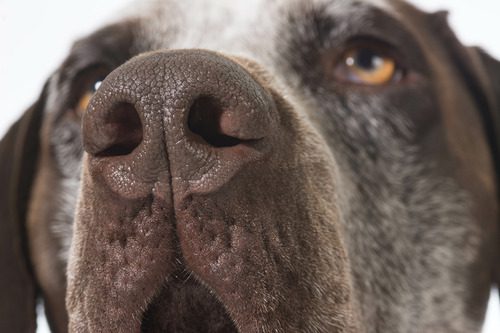Dog Paw Pad Injury Flap: How to Help Your Dog
Dogs are adventurous and playful creatures, often exploring the world with unbridled enthusiasm. However, this adventurous spirit can sometimes lead to injuries, especially to their sensitive paw pads and result in a dog paw pad injury flap. If your dog’s paw pad is injured, call Saratoga Veterinary Hospital at (518) 587-3832 so our team can provide further guidance.

What Are Dog Paw Pad Injury Flaps?
Dog paw pad injury flaps occur when a portion of the paw pad is partially torn or detached. This type of injury can result from various activities, including running on rough terrain, stepping on sharp objects, or even excessive licking and chewing due to allergies or irritations.
What Are Some Symptoms of Paw Pad Injuries?
Some common symptoms to watch for include:
- Limping or favoring one paw
- Excessive licking or chewing of the paw
- Visible cuts, tears, or flaps on the paw pad
- Bleeding or oozing from the paw
- Swelling or redness
A minor cut or abrasion might not be a cause for immediate concern, but a significant tear or flap should be examined by a veterinarian promptly.
Causes of Paw Pad Injury Flaps
Paw pad injury flaps can be caused by a variety of factors, many of which are related to your dog’s environment and activities. Some common causes include:
- Walking or running on hot pavement
- Stepping on sharp objects like glass or rocks
- Running on rough or abrasive surfaces
- Excessive licking or chewing due to allergies or stress
- Exposure to harsh chemicals or salt used on icy roads
When to See the Vet for a Dog Paw Pad Injury
While minor cuts and abrasions on your dog’s paw pads can often be managed at home, a paw pad injury flap requires professional veterinary attention. Here’s when you should see the vet:
Severity of the Injury
If the paw pad injury flap is deep, bleeding heavily, or causing your dog significant pain, it’s time to call Saratoga Veterinary Hospital at (518) 587-3832. A veterinarian can properly clean and assess the wound, potentially requiring stitches or other treatments to promote healing and prevent infection.
Signs of Infection
Signs of infection include:
- Increased redness and swelling
- Pus or discharge from the wound
- Foul odor
- Fever or lethargy in your dog
Persistent Limping or Discomfort
If your dog continues to limp or show signs of discomfort despite your attempts to clean and bandage the wound, it’s best to consult a vet. Persistent limping can indicate a more serious underlying issue or improper healing of the paw pad injury flap.
How to Prevent Paw Pad Injuries
Here are some tips to prevent paw pad injury flaps:
- Regular Paw Inspections: Make it a habit to inspect your dog’s paws regularly, especially after outdoor activities. Look for any signs of cuts, abrasions, or foreign objects stuck in their pads.
- Protective Footwear: Consider using protective booties for your dog during walks on rough terrain, hot pavement, or icy roads. These booties can provide an extra layer of protection against potential hazards.
- Paw Pad Care: Keep your dog’s paw pads moisturized to prevent cracking and dryness. There are various pet-safe paw balms and moisturizers available that can help keep the pads soft and less prone to injuries.
- Training and Supervision: Monitor your dog’s activities, especially if they tend to be overly enthusiastic or adventurous. Training your dog to avoid dangerous areas and objects can also reduce the risk of paw pad injuries.
Paw Pad Care at Saratoga Veterinary Hospital
At Saratoga Veterinary Hospital, we understand the importance of prompt and effective care for paw pad injuries. Our team of experienced veterinarians is equipped to handle a wide range of injuries and conditions, ensuring your dog receives the best possible treatment.
Comprehensive Examination
When you bring your dog in with a paw pad injury flap, our veterinarians will conduct a thorough examination to assess the extent of the injury. This includes checking for foreign objects, cleaning the wound, and determining the best course of treatment.
Treatment Options
Depending on the severity of the paw pad injury flap, treatment may involve cleaning and disinfecting the wound, applying bandages, and administering pain relief. In some cases, stitches may be necessary to promote proper healing.
Follow-Up Care
Our veterinarians will provide you with detailed instructions on how to care for your dog’s paw at home, including changing bandages and monitoring for signs of infection.
The Role of Pet Insurance in Managing Paw Pad Injuries
Pet insurance can be incredibly helpful when dealing with unexpected injuries, such as a dog paw pad injury. It ensures that your dog has access to the care they need without hesitation. Pet insurance often covers a range of veterinary services, including emergency care, surgeries, and medications. With insurance, you can make decisions that prioritize your dog’s health and recovery.
Choosing the Right Insurance Plan
When selecting a pet insurance plan, consider factors such as coverage limits, deductibles, and exclusions. Look for a plan that includes coverage for accidents and injuries, including paw pad injuries, so you can feel confident your dog is well-protected.
Peace of Mind
Having pet insurance provides reassurance, allowing you to focus fully on your dog’s recovery. It’s a thoughtful way to support your dog’s health and well-being. By knowing how to protect your dog’s paw pads and seeking prompt veterinary care when paw pad injuries arise, you can provide the best care for your furry friend. If your dog experiences a paw pad injury, call Saratoga Veterinary Hospital at (518) 587-3832. Our team is here to help your dog recover and get back to their playful self.
Recent Posts
What is a Fear Free Veterinarian? A Calmer Approach to Pet Care
What is a Fear Free Veterinarian? A Calmer Approach to Pet Care For many pets, a trip…
Hyperthyroidism in Cats: Symptoms & Treatment
Hyperthyroidism in Cats: Symptoms & Treatment Hyperthyroidism is one of the most common hormonal conditions affecting middle-aged…
Dog Licking Paw: Symptoms & Treatment
Dog Licking Paw: Symptoms & Treatment If you’ve noticed your dog licking their paws more than usual,…
Dog Nose Dripping: Why Your Dog Has a Runny Nose
Dog Nose Dripping: Why Your Dog Has a Runny Nose A dog’s nose is an important part…
Cat Eye Infection: Symptoms & Treatment
Cat Eye Infection: Symptoms & Treatment When your cat has an irritated or weepy eye, it’s hard…
About Saratoga Veterinary Hospital
Saratoga Veterinary Hospital is proud to serve as your local veterinarian of choice in WIlton, NY and the surrounding areas. Since its founding in 1973 by Dr. Sofarelli, our animal hospital’s main goal has been to strengthen the human-animal bond with exceptional veterinary medicine and client services.







